NCP-MCI-6.5 plan - Nutanix Certified Professional - Multicloud Infrastructure (NCP-MCI) v6.5 Updated: 2024

 |
 |
 |
 |
 |
 |
 |
 |
NCP-MCI-6.5 Nutanix Certified Professional - Multicloud Infrastructure (NCP-MCI) v6.5
Exam Specification:
- Exam Name: Nutanix Certified Professional - Multicloud Infrastructure (NCP-MCI) v6.5
- Exam Code: NCP-MCI-6.5
- Exam Duration: 120 minutes
- Exam Format: Multiple-choice questions
Course Outline:
1. Introduction to Nutanix and Multicloud Infrastructure
- Overview of Nutanix architecture and components
- Understanding the benefits and use cases of multicloud infrastructure
2. Nutanix Cluster Architecture and Configuration
- Configuring and managing Nutanix clusters
- Understanding cluster components and services
3. Storage and Data Services
- Configuring and managing storage resources
- Implementing data services such as snapshots and replication
4. Virtualization and Networking
- Managing virtual machines (VMs) and virtual networks
- Configuring network services and security
5. Data Protection and Disaster Recovery
- Implementing backup and restore strategies
- Designing and implementing disaster recovery solutions
6. Monitoring and Troubleshooting
- Monitoring cluster health and performance
- Troubleshooting common issues and performance bottlenecks
7. Security and Compliance
- Implementing security controls and policies
- Ensuring compliance with industry regulations
Exam Objectives:
1. Understand Nutanix architecture, components, and multicloud infrastructure concepts.
2. Configure and manage Nutanix clusters, including cluster components and services.
3. Manage storage resources and implement data services in a Nutanix environment.
4. Manage virtual machines (VMs) and configure virtual networks in a Nutanix environment.
5. Implement data protection strategies and disaster recovery solutions.
6. Monitor cluster health and performance and troubleshoot common issues.
7. Implement security controls and ensure compliance with industry regulations.
Exam Syllabus:
The exam syllabus covers the following topics (but is not limited to):
- Nutanix architecture and components
- Multicloud infrastructure concepts
- Nutanix cluster configuration and management
- Storage and data services in Nutanix
- Virtualization and networking in Nutanix
- Data protection and disaster recovery
- Monitoring and troubleshooting
- Security controls and compliance
Nutanix Infrastructure plan
Other Nutanix exams
Nutanix-NCP Nutanix Certified Professional 5.10NCP-MCI-5.15 Nutanix Certified Professional Multicloud Infrastructure (v5.15)
NCS-Core Nutanix Certified Services Core Infrastructure Professional
NCSE-Core Nutanix Certified Systems Engineer-Core (NCSE-Core)
NCSE-Level-1 Nutanix Certified Systems Engineer (NCSE): Level 1
NCP-MCI-6.5 Nutanix Certified Professional - Multicloud Infrastructure (NCP-MCI) v6.5
NCP-MCI-6.5 Braindumps
NCP-MCI-6.5 Real Questions
NCP-MCI-6.5 Practice Test
NCP-MCI-6.5 dumps free
Nutanix
NCP-MCI-6.5
Nutanix Certified Professional - Multicloud Infrastructure
(NCP-MCI) v6.5
http://killexams.com/pass4sure/exam-detail/NCP-MCI-6.5
Question: 41
Administrator is creating a Windows 10 VM that will be used for a virtual desktop template. After creating the VM
and booting to the ISO, the administrator is unable to install Windows and receives the following error.
What steps does the administrator need to take to install the OS?
A. Load the Nutanix VirtIO Serial Bus Driver.
B. Load the VirtIO Network Ethernet Adaper.
C. Load the Nutanix Virtual Balloon Driver.
D. Load the Virtual SCSI pass-through controller.
Answer: D
Question: 42
An administrator has been asked to enable block awareness and increase the fault tolerance to FT2 on a Nutanix AHV
cluster with the following configuration:
Four blocks
One node per block
Will the administrator be able to accomplish these tasks?
A. No-Fault tolerance changes are not supported.
B. Yes-FT2 requires a minimum of three nodes.
C. Yes-Block awareness requires a minimum of three blocks.
D. No-FT2 requires a minimum of five nodes.
Answer: D
Question: 43
An administrator wants to replace and old node with a node of newer generation in a 3-node cluster.
The administrator has already chosen the appropriate node. But unable to remove it from the cluster.
Why is the Remove Host option not shown in the exhibit?
A. The host needs to be placed into maintenance Mode before.
B. It is only possible to remove a host from a cluster using CLI.
C. It is not possible to remove a node from a the cluster using Prism Central
D. It is not possible to remove a host from a 3-node cluster.
Answer: D
Question: 44
In the event of a disk failure, which process will immediately ad automatically scans Cassandra to find all data
previously hosted on the failed disk, and all disks in that node?
A. Curator
B. Stargate
C. Genesis
D. Prism
Answer: A
Question: 45
An administrator wants to receive an environment summary report when a host failure occurs.
Which action would address the administrator’s need?
A. Enable App Discovery
B. Edit report schedule
C. Configure an alert policy
D. Create a playbook
Answer: C
Explanation:
An alert policy can be configured to send out an environment summary report when a host failure occurs. This can be
done by creating a policy that triggers an alert whenever a host fails and then configuring the policy to send out a
report that provides a summary of the environment in which the failure occurred. This will allow the administrator to
quickly get a view of the environment after a failure occurs, allowing them to take the necessary steps to address the
issue.
Question: 46
An administrator needs to increase bandwidth available to the AHV host and to the CVM.
How should the administrator complete this task?
A. In Prism, update vs0 to change the configuration to Active-Active.
B. Use manage-ovs commands to update br0 change the configuration to Active-Active.
C. In Prism, create a vsl interface and add any remaining uplinks.
D. Use manage-ovs commands to create br1 and add any remaining uplinks
Answer: A
Question: 47
An Administrator has been asked to deploy VMs using a specific image. The image has been configured with settings
and applications that will be used by engineering to develop a new product by the company.
The image is not available on the desired cluster, but it is available in other cluster associated with Prism Central.
Why isno’t the image available?
A. The image bandwidth policy has prevented the image upload.
B. The cluster should be removed from all categories.
C. The cluster has not been added to the correct category
D. The image placement policy was configured with enforcement.
Answer: D
Explanation:
When a placement policy is enforced, images are only allowed to be deployed on clusters that are part of categories
that are associated with the policy. If the desired cluster is not associated with the policy, then the image will not be
available for deployment.
Question: 48
An administrator has an AHV cluster that is comprised of 4 nodes with the following configuration in each node:
CPU:2 each 2.4GHz, 12 core
Memory: 256GB
Disk: 6 each 1.92 SSD
A VM with 16 vCPUs and 96GB of RAM is being created on the cluster.
How should the administrator configure the VM to assure optimal performance?
A. With an affinity policy
B. With memory overcommit
C. With 2 vNUMA nodes
D. With Flash Mode enabled
Answer: C
Explanation:
The best way to configure the VM for optimal performance is to set it up with 2 vNUMA nodes. This will ensure that
the VM is configured to take advantage of the CPU and memory resources available in each node, and it will also
ensure that all of the cores are utilized for the best performance. Additionally, the administrator should ensure that the
VM has an affinity policy set up so that the vCPUs are evenly distributed across the four nodes. Finally, Flash Mode
should be enabled in order to take advantage of the high-performance SSDs that are available in the cluster
Question: 49
On a Nutanix cluster, what does Network Segmentation refer to?
A. A distributed firewall for security VM to VM traffic.
B. Physically separating management traffic from guest VM traffic.
C. Isolating intra-cluster traffic from guest VM traffic.
D. Isolating management traffic from storage replication traffic.
Answer: D
Question: 50
Refer to the exhibit.
An administrator is adding a new node to a cluster. The node has been imaged to the same versions of AHV and AOS
that the cluster running, configured with appropriate IP addresses, and br0-up has been configured the same the
existing uplink bonds
When attempting to add the node to the cluster with the Expand Cluster function in Prism, the cluster is unable to find
the new node.
Based on the above output from the new node, what is most likely the cause of this issue?
A. The ports on the upstream switch are not configured for LACP.
B. The existing and the expansion node are on different VLANs.
C. There is a firewall blocking the discovery traffic from the tlu
D. LACP configuration must be completed after cluster expansion
Answer: B
For More exams visit https://killexams.com/vendors-exam-list
Kill your exam at First Attempt....Guaranteed!
Nutanix has added multi-cloud capabilities to its hyper-converged infrastructure software stack, including a single software fabric that works across on-premises appliances, from multiple vendors, and across multiple clouds as well.
The new capabilities, introduced as the first of several new cloud services, were unveiled at the Nutanix .NEXT conference held this week in Washington, D.C.
Nutanix also unveiled a strategic relationship with Google that will allow certain Nutanix-based hyper-converged infrastructure services to run natively on the Google Public Cloud.
[Related: Nutanix Brings Its HCI Software To HPE Servers, Adds New Appliance Rental Option]
Nutanix is looking at how to help partners and customers build coherent hybrid clouds, something that has proven difficult with more traditional on-premises infrastructures, said Greg Smith, senior director of product marketing at San Jose, Calif.-based Nutanix.
"And we are looking beyond hybrid clouds to remote offices, even at remote locations like military installations, oil-gas fields, and so on," Smith told CRN. "It's what we're calling the 'edge cloud.'"
To make that happen, Nutanix unveiled Nutanix Xi Cloud Services, which extends data center services to the cloud via the company's Prism centralized data center infrastructure management software.
The focus of Nutanix Xi Cloud Services is to take out the complexity of extending on-premises services to the cloud, Smith said. "Today, customers need a complex, expensive lift and shift to get to the cloud," he said. "We're eliminating that need by providing a common experience across on-prem and cloud environments."
The first Nutanix Xi Cloud Service, which is expected to be available early next year, is Xi Cloud Disaster Recovery. "Customers will be able to set up, manage, and test complete disaster recovery services in minutes," Smith said. "This can all be done without a separate disaster recovery site or a third-party cloud."
The Nutanix Xi Cloud Service takes advantage Nutanix's own cloud which is based in several colocation centers to provide customers with the ability to offer a variety of cloud services related to the company's hyper-converged infrastructure, he said.
With the new strategic relationship with Google, those services can also be run natively in the Google Public Cloud.
The Xi Cloud Disaster Recovery service is slated to be available early next year, with other services to follow, Smith said.
Nutanix also unveiled the Nutanix Enterprise Cloud OS software, an application that extends the Nutanix hyper-converged infrastructure environment to the cloud.
With Nutanix Enterprise Cloud, the Nutanix software stack, which is currently available for on-premises deployments in appliances from Nutanix, Dell EMC, Lenovo, and IBM, is now available as a native cloud-delivered solution, Smith said.
"This is a major advancement in terms of providing hybrid cloud services," he said. "We're providing complete application mobility regardless of whether customers want to work on-premises or in the cloud."
Also new is Nutanix Calm, a single software fabric that lets customers define and publish applications in the form of blueprints that can then be provisioned across different cloud environments, Smith said.
Nutanix Calm, which is expected to be available late this year, takes advantage of the compute and storage capabilities of the Nutanix hyper-converged infrastructure software stack to converge applications using the VMware ESX, Microsoft Hyper-V, and Nutanix AHV hypervisors across Xi Cloud services and public clouds starting with AWS, Smith said Nutanix Calm will eventually be offered across Google Cloud Platform and Microsoft Azure, he said.
"We're allowing customers to decouple their applications from their infrastructures," he said. "Customers can choose to run their applications where they want to based on cost and performance requirements … The net effect will be to elevate traditional IT managers to become cloud IT managers."
Customers definitely have an appetite for extending their hyper-converged infrastructure deployments to the cloud, said Rick Gouin, chief technology officer at Winslow Technology Group, a Boston-based solution provider and channel partner to both Nutanix and Dell EMC, which OEMs the Nutanix software stack for its XC series appliances.
"Dell EMC already has a good story with its VxRail integration to the cloud," Gouin told CRN. "There's a definite need for Nutanix to do this."
Customers are moving to clouds in varying degrees of speed, and are looking at more than one cloud, Gouin said. He looks forward to having Nutanix's multi-cloud capabilities on the Dell XC series appliances.
"For the most part, new Nutanix capabilities come to the XC series quickly, but not all," Gouin said. "Nutanix supports Xen hypervisors, but Dell XC appliances do not, probably because of Dell's VMware relationship."
Nutanix will leverage existing channel partners for its new multi-cloud initiatives, Smith said.
"Xi Cloud gives partners the ability to add a set of integrated cloud services to their Nutanix clients," he said. "And Nutanix Calm provides partners with differentiation for hyper-converged infrastructure in the cloud. It will increase the market with automation tools to extend beyond existing infrastructure to DevOps."
Nutanix will provide partners with new technical and sales training, but does not plan to offer new certifications, Smith said. "Our goal is to make this part of our existing programs to provide a consistent selling process for our partners."
CRN breaks down the seven biggest launches Tuesday at Nutanix .NEXT—from new hyperconverged infrastructure software to Kubernetes and security offerings.
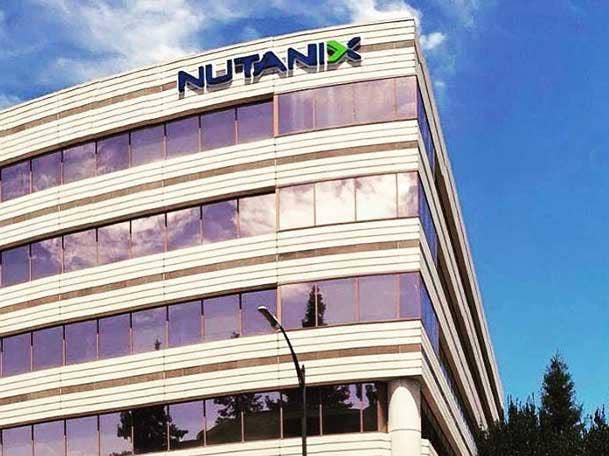
Nutanix .NEXT 2020
See the latest entry: Nutanix .Next 2021: 5 Huge Launches You Need To Know
Nutanix’s virtual .NEXT conference kicked off Tuesday as the hyperconverged and hybrid cloud software standout launched a slew of new products and as-a-service offerings ranging from hyperconverged infrastructure software to Kubernetes and security offerings.
“There’s a lot of room for growth in hyperconverged, and channel partners have a huge opportunity right now with Nutanix,” said Nutanix CTO Rajiv Mirani in an interview with CRN. “We’ve made significant investments in R&D to advance our core software stack as you can see with these releases. We’re continuing to set the bar for innovation.”
Thousands of people are expected to participate in Nutanix’s free .NEXT Digital Experience conference, which runs from Sept. 8 to Sept. 11.
CRN breaks down the seven biggest product news and announcements unveiled at Nutanix .NEXT.
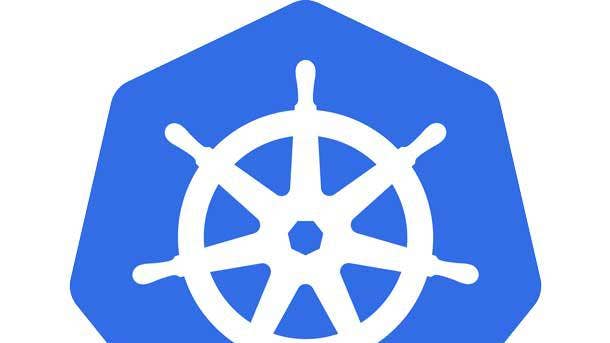
Karbon Platform Services: Kubernetes PaaS
One of Nutanix’s biggest launches at .NEXT is its new Karbon Platform Services, a Kubernetes multi-cloud Platform as a Service (PaaS) with automated system-managed security. The new cloud-native PaaS gives software developers a turnkey managed services experience on-premises, in the public cloud or at the edge to build and run cloud-native applications. Karbon Platform Services also lets developers decouple applications from the underlying infrastructure.
“Our Karbon Platform Services is a full PaaS offering that essentially takes some of the most common cloud-native services and makes them available on-premises. So capabilities like Containers as a Service, but also Functions as a Service, serverless applications, support for monitoring with Prometheus, as well as advanced networking and data services,” said Mirani. “Few applications today are just self-contained inside a container, they do use all these other PaaS services as well. … We wanted to make Karbon very simple.”
Karbon Platform Services builds on the core Kubernetes life-cycle management capabilities with Karbon as an integrated component of the Nutanix HCI software. This new offering brings automated system-managed security and multitenancy to run a wide range of microservices-based applications across multiple cloud infrastructures, said Mirani.
“It’s a great opportunity for the channel because as people monetize their applications, they look for new ways to build them,” said Mirani. “This is something that could be a great value-added service that our partners can provide.
Nutanix Karbon Platform Services is now available.
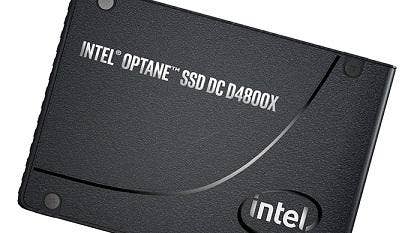
HCI Software With New Blockstore Technology And Intel
Nutanix has revamped its flagship HCI architecture by injecting NVMe-based SSDs and Intel Optane SSDs, delivering up to 50 percent faster performance for I/O-intensive workloads such as large databases.
“It improves performance on some of the most complex workloads that we have by up to 50 percent. Things like latencies when you have sustained operations or IOPS [Input/Out Operations Per Second] when you have sustained operations. The way we did this was to rearchitect AOS,” Nutanix’s Mirani told CRN. “Obviously, it lets us go after the most critical applications like SAP HANA, Epic, etc. So that’s always extending the reach of what we can do.”
Nutanix’s new Blockstore technology self-manages storage with greater efficiency than traditional file systems. In addition, Nutanix HCI software adds support with the Storage Performance Development Kit, an open-source library developed by Intel that enables applications to access NVMe capacity directly in order to avoid any OS or kernel-level overhead and drive even faster workload performance.
“The net result is that with these improvements in performance, we continue to extend our lead,” said Mirani. “It really makes us well positioned for some of the newer hardware technologies that we just started working with.”
The enhanced Nutanix HCI software is now available.
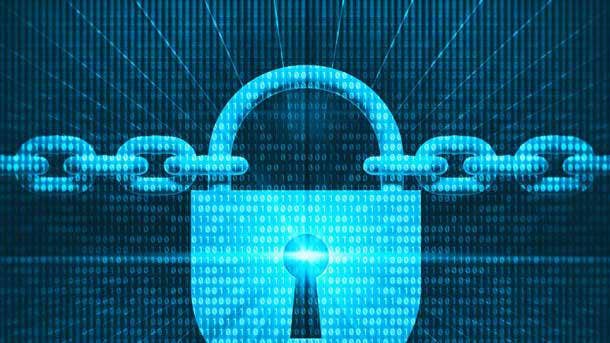
Flow Security Central
Nutanix is launching a new centralized SaaS-based management plan, Flow Security Central, which provides compliance monitoring, network visibility and security operations across Nutanix-powered private clouds and public cloud environments. The offering also provides new micro-segmentation security planning as well as security audit and remediation.
“Flow Security Central is not just networking, it’s a lot more than that. It provides a view into your security posture, into your compliance requirements as well as doing networking monitoring. Think of it as single pane of glass from which you can monitor your Nutanix infrastructure, look for compliance violations, you can get recommendations on how to fix them—but on top of that, you can look into your network traffic, get recommendations on micro-segmentation rules and so on,” said Mirani.
Flow Security Central provides customers with a hub for their security operations so they can assess their overall security posture of Nutanix deployments and generate detailed recommendations to bring environments into compliance. In addition, it offers the network visibility and context needed to secure cloud networks and applications, according to Mirani.
Flow Security Central is now available.
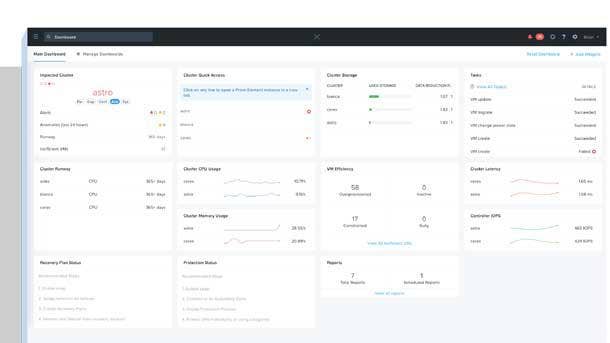
Prism Ultimate
Nutanix is taking its infrastructure and hypervisor management offering, Prism, to the next level with the launch of Prism Ultimate, a cloud-based SaaS service.
Prism Ultimate adds advanced application insight and automation for troubleshooting application-related infrastructure bottlenecks. It also offers visibility into cloud IT resource consumption for targeted IT cost reductions and more accurate budgeting.
Nutanix Prism can also monitor non-Nutanix environments, including popular virtualization stacks, to give Nutanix customers a single pane of glass for their entire infrastructure.
“Prism Ultimate is mainly based around analytics and monitoring, but instead of running on-premises this will run as a SaaS service in the cloud,” said Mirani. “We can apply a lot more resourcing in terms of CPU memory and so on, and provide even deeper insight into what’s happening. Plus, over time, you’ll be able to do cross-customer analytics.”
Prism Ultimate is currently available.

Nutanix Flow Networking, New VPC Technology
Built into Nutanix’s AHV virtualization, Nutanix Flow delivers advanced networking and security services to provide visibility into a virtual network as well as application protection and automation of common network operations.
At .NEXT, Nutanix introduced Flow Networking, aimed at simplifying the tasks of creating, isolating and managing software-defined networks that connect applications running in private data centers and in public clouds. The goal is to significantly simplify networking for hybrid and multi-cloud deployments. The new offering is based on virtual private cloud (VPC) constructs used by the leading public cloud providers and is a result of the company’s multiyear investment in Nutanix Xi Cloud that powers Nutanix’s cloud-based offerings.
“We have our own Xi offering, which lets you do disaster recovery as a service. We’ve developed the technology in the context of that so when people fail over to the Nutanix cloud, they don’t have to change their IP addresses to get their own virtual cloud which they can operate. We’re making that technology available on-premises,” said Mirani. “So people can now create on-premises multiple virtual private clouds completely isolated from each other and enable networking multitenancy within their on-premises infrastructure.”
The new software-defined networking capabilities of Nutanix Flow Networking are currently in development and will become available in late 2020, according to Mirani.

Calm as a Service
Nutanix also unveiled Calm as a Service, a hosted version of its application management and orchestration offering to support DevOps teams.
“Calm itself used to run only on a Nutanix AOS cluster. We’re now making it available as a service. You’ll be able to orchestrate and automate your environments from the cloud,” said Mirani. “So now there’s no dependency at all on Nutanix. Of course, you’ll still be able to orchestrate and automate Nutanix environments as well, but if you’re using it for VMware or cloud environments you can do that straight from the cloud.”
Nutanix Calm automates provisioning, scaling and life-cycle management for the cloud. Calm as a Service is now available.

New Elevate Partner Program
On the channel partner front, Nutanix launched its new Elevate Partner Program that for the first time brings together all of Nutanix’s partner ecosystem from VARs, systems integrators and distributors to service providers and hardware vendors.
Elevate includes new front-end margins, mechanisms to help deliver margin-rich services, better rebate levels for bringing in new business, and a new rebate that rewards Elevate Cloud Champion partners for selling across the entire Nutanix portfolio.
Nutanix also created a new partner portal with greater access to information and insight across the partner ecosystem through custom-branded marketing materials, training tools and personalized insight, allowing for more effective data-driven decisions. Another new enhancement is Nutanix’s new Performance+ Deal Registration, designed to increase incentive potential and opportunity protection. The deal registration program provides increased partner discounts, more predictable deal margins and enhanced opportunity protection.
Nutanix also launched a new Americas Partner Support Center – a team of dedicated channel sales, systems engineers and marketing resources—who will deliver an enhanced partner experience and will be available to usher the partner community through the transition along with ongoing presales support. The Elevate Partner Program emphasizes partner capabilities and competencies to sell and support Nutanix’s portfolio rather than revenue thresholds.
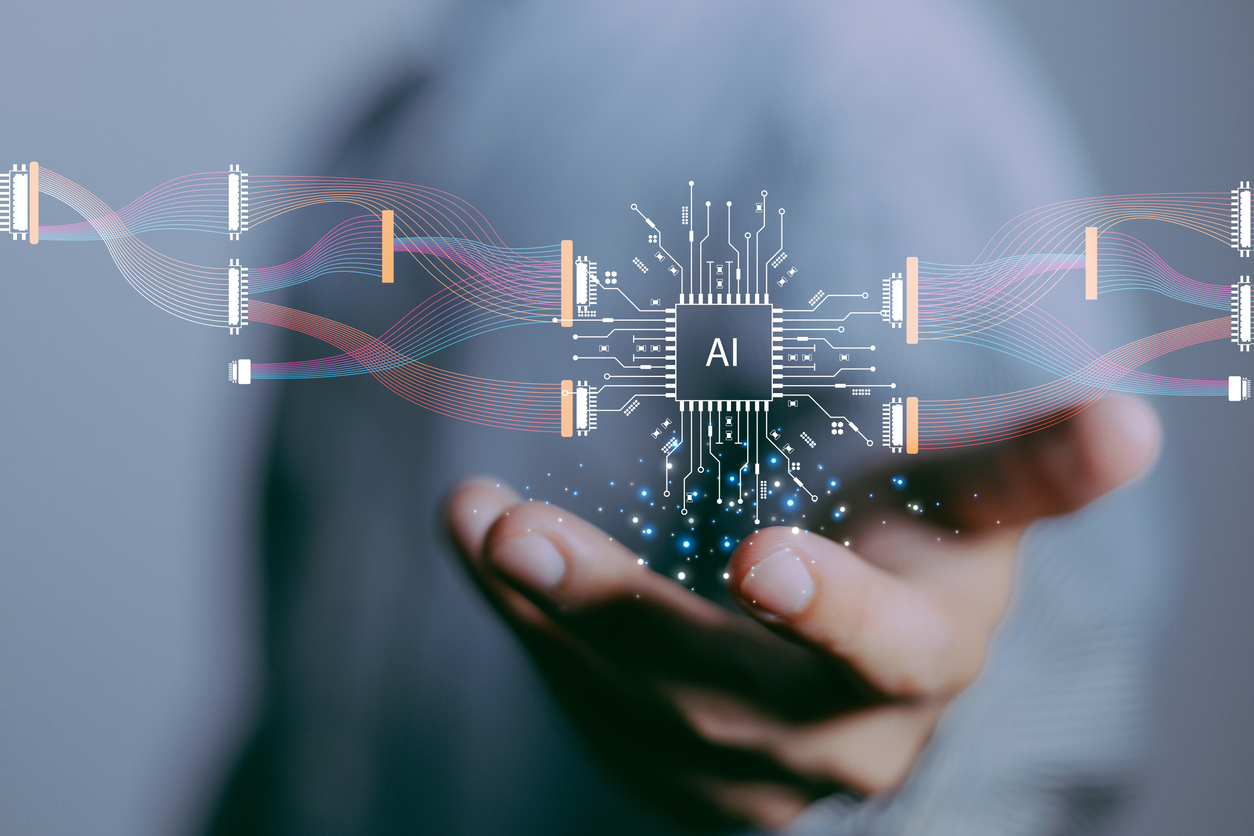
AI is no longer just a buzzword, but a fundamental driver of enterprise evolution and modernization in 2023 and beyond, according to a new report by Nutanix.
The just-released Nutanix State of Enterprise AI Report for Asia-Pacific and Japan (APJ) report highlights enterprise AI deployment and trends within the region, and crucially, how planned implementations will affect staffing, IT, and cloud investments
The report is based on a global research study conducted by Vanson Bourne, on behalf of Nutanix, surveying 200 IT, DevOps, and Platform Engineering decision-makers in the latter part of last year.
APJ enterprises going AI
According to the report, AI could be a priority for nine out of 10 (90%) of APJ organizations and most are planning investments to support it - whether to modernize their IT infrastructure (84%) or to advance their edge strategy (81%).
For now, the top two AI solutions deployed by them include virtual assistants or customer support bots (50%), as well as a mix of generative AI solutions (52%). Unfortunately, 90% of APJ organizations are slowed by a generative AI skills gap, including the need for more data scientists and data science skills to support their initiative.
Compared to organizations elsewhere, those in APJ are more likely to purchase existing AI models or leverage existing open-source AI models (86%) to build their AI applications than to build their own models (5%) – with the latter five points lower than the global average of 10%.
This inclination could stem from a confluence of factors, including the substantial costs associated with in-house AI model development, a dearth of skilled AI personnel within the region, and the abundance of readily available pre-trained AI models applicable to diverse purposes.
“While many enterprises have rapidly adopted AI and are reaping the short-term benefits of early adoption, it's important to remember that AI adoption is a marathon, not a sprint,” said Aaron White, the vice president and general manager of APJ Sales at Nutanix.
“The adoption strategy will be a key differentiator setting enterprises up for long-term success. As more enterprises adopt AI applications and workloads, we can expect a new wave of IT infrastructure modernization initiatives focused on data mobility, security, and protection.”
As enterprises explore AI technologies and solutions to maintain a competitive edge, White pointed to a growing requirement for data mobility and data protection regardless of environment.
The full report can be viewed here.
Image credit: iStockphoto/Digital43
Lisa Kling is a marketing analyst, social media strategist, professional blogger and Web editor. She is a featured contributor in business and finance for various websites and blogs at Thriftability.com. She also manages personal finance blogs for companies internationally. Kling studied business, journalism and marketing at Colorado State University. She is a volunteer firefighter who resides in the Colorado mountains.
President Biden is proposing a massive spending plan to supposedly build and rebuild America's infrastructure. While the plan relies on the moderate and uncontroversial term “infrastructure,” less than 5% would actually go toward traditional road infrastructure projects. Rather, it will be spent on corporate welfare, tax credits, and the left's radical “green” agenda. On this episode, we learn what's in this plan, how much it will cost, and how we're going to pay for it (HINT: Taxes are likely going up). Â
Tim Doescher: From The Heritage Foundation, I'm Tim Doescher, and this is Heritage Explains.
David Ditch: Another thing they're looking to do is to spend trillions of dollars on “infrastructure.” Again, supposedly to juice the economy, but in reality, mostly going to benefit a handful of left-leaning constituencies. And you're left with the two bad options. Either they just put this on the national credit card, which is already overloaded, or as Senator Manchin has been saying, what he'd like to do is get rid of all the 2017 tax cuts and use that to pay for more federal spending. That definitely would not help juice the economy.
Doescher: That's David Ditch, on a prior episode of Heritage Explains, that focused on the so-called COVID relief package and how it hardly spent money on COVID relief. He was concerned that passing a law like this would inspire leftists to use the same strategy on things like infrastructure in the future. Well, just over a month later, he was proven right.Â
Doescher: President Biden and his cohorts in the Democrat party are now pushing for a “infrastructure spending bill.” Here's President Biden introducing his new plan.
President Biden: I'm proposing a plan for the nation that rewards work, not just rewards wealth. It builds a fair economy that gives everybody a chance to succeed, and it's going to create the strongest, most resilient, innovative economy in the world. It's not a plan that tinkers around the edges. It's a once-in-a-generation investment in America, unlike anything we've seen or done since we built the interstate highway system and the space race decades ago.
Doescher: This represents spending two and a quarter trillion dollars of money we don't have. If it wasn't such a serious issue, it would almost be comical. Whatever the justification, it seems like we just keep on spending money.
Doescher: But let's put spending on the back burner for a second and focus on infrastructure. When talking about infrastructure projects, you typically hear about spending money to build or rebuild things like roads, bridges, pipelines, and airports. But this recent clip of Transportation Secretary, Pete Buttigieg suggests their sites may be set on other priorities.
Pete Buttigieg: There is racism physically built into some of our highways, and that's why the jobs plan has dollars specifically committed to reconnect some of the communities that were divided by these dollars.
Doescher: See, told you. So what will we be spending two and a quarter trillion dollars on? Apparently not infrastructure.
Doescher: Our great Heritage experts discovered that less than 5% of this bill would be spent on traditional infrastructure projects. But rather, it would look more like just another slush fund set up for liberal priorities. So what are those priorities?
Doescher: If only 5% of two and a quarter trillion dollars will go toward traditionally defined infrastructure projects, where does the other 95% go? How are we going to pay for it? Will your taxes go up? Matt Dickerson is the director of the Hermann Center for the Federal Budget here at The Heritage Foundation. On this episode, he talks about Biden's infrastructure plan, the waste, the added strain to our financial situation here in America. But more importantly, he provides a roadmap on how we should do infrastructure in a way that limits government and allows the private sector to grow. We'll get into it right after this.
>>> 9 Things You Need to Know About Biden’s “Infrastructure” Spending Plan
Doescher: Matt, President Trump, he made a big deal about America's “crumbling infrastructure.” And now President Biden and Democrats in Congress, they're pressing hard for this two and a quarter trillion dollar infrastructure spending package, we'll call it. Hearing that, this country must be in bad shape. Is that correct, or what should I say?
Matt Dickerson: Well, I think it depends on what you want to call infrastructure, right?
Doescher: Right. Yes. Yeah.
Dickerson: Of course, they're calling this an infrastructure package, but I think that's really a complete misnomer. Everybody cares about infrastructure, but they automatically assume that it's their roads and bridges that they drive on a commute. That's what a lot of people think about it.
Doescher: Traditionally, infrastructure is roads, bridges, tunnels, airports, whatever it is. But go into a little bit of what the Left is considering infrastructure right now.
Dickerson: Everything's infrastructure. This podcast is infrastructure.
Doescher: Interesting. So we're going to get money from... No, I'm just kidding.
Dickerson: But they're taking this buzz word that polls well, and they're trying to brand everything is infrastructure. But only 5% of this more than $2 trillion spending bill is what people actually think is infrastructure.
Doescher: Wow.
Dickerson: And most of that 5% of spending for roads and bridges is just going to go for maintenance of existing infrastructure that we already have. It's not going to be building new lanes of highway or helping to reduce congestion. It's just going to be simple maintenance.
Doescher: So similar to this, we had David Ditch on a few episodes ago talking about the 1.9 trillion. Another two trillion of the so-called COVID Relief Bill. And less than 10%, and that's a generous number by the way, less than 10% of that actually went to COVID relief. And he said he was concerned that this model would be used for an infrastructure bill. So he was almost seeing into the future, talking about what's happening. So here we are, it happened. Obviously, two and a quarter trillion dollars is a lot. 5% of that is not that much. Talk where the rest is going.
Dickerson: It's a little bit of everything under the sun. I think if we remember over the last couple of years, the Left really campaigned on this Green New Deal, where the federal government would be getting involved in every facet of the economy. Spending on this, that, and you name it. That's really the model that this bill is following.
Doescher: So Green New Deal, meaning this is going to be a huge focus in promoting electric vehicles, promoting probably alternate sources of energy... And then you, of course, you open the door to subsidies. Is that correct?
Dickerson: Absolutely. There's going to be a more than $170 billion for electric vehicles. So if you're in the market for a new, expensive, subsidized Tesla, this will be a good for you.
Doescher: Wow.
Dickerson: There's going to be tons of money going for subsidies for green, clean energy. And of course they want to also use this package to attack the fossil fuels industry that so many people rely on.
Doescher: We can talk more about subsidies and perverse incentives like that, but it just sparks in my head, who drives a Tesla car? Who has the money to buy a Tesla car? And it's not everyday working people. They're expensive cars. And if you have a tax credit to buy one and we have to pay for this, and we're going to get into how we're going to pay for this. We have to pay for it... It would strike me that the everyday working people are, therefore, subsidizing the wealthy people who can afford a Tesla. That's pretty much where we're at, isn't it?
Dickerson: Yeah. I think in large part, it's going to be a transfer of wealth from people who drive, to people who can afford these electrified vehicles, and people who are taking transit, and riding on the subway in urban areas. So it's going to be taking money from people in rural areas and transferring it to folks who live in dense, urban areas.
Doescher: Let's talk about how we're going to pay for this. I've seen we're going to raise the corporate tax. Trump cut the corporate tax. We're going to raise it, and that's going to pay for it. But to me, that doesn't seem like there's going to be nearly enough to pay for all this. How do they propose that?
Dickerson: You're right. President Biden is proposing to raise the corporate tax rate from 21%, which is about middle of the road for the normal average for our international competitors. Actually, there's 25 of our major international competitors that have a lower corporate tax rate than the United States does right now.
Doescher: Wow.
Dickerson: Taking it to 28%. And if you take into account the state corporate taxes that businesses are going to have to pay, that's going to give the United States the highest corporate tax rate in the entire industrialized world of our international competitors. It's going to be higher than China's 25% rate. If you're going to give the United States a higher tax rate than communist China, that seems like really bad policy.
Doescher: Yeah, and on top of that, you've got people even here, I've heard some people on the Right talking about how it's okay to raise corporate taxes because the working man needs a break kind of a thing. It's that mindset. Just discuss, just a little bit, what a raise in the corporate tax means for people. I've even seen a report that utilities are going to go up. That hits people directly in their pocket.
Dickerson: Absolutely, it's important to remember that only people pay taxes. All of the taxes that are imposed on businesses get passed on to workers. They get passed on to investors, and they get passed on to consumers. A study by Adam Michel at The Heritage Foundation showed that 75 to 100% of the corporate tax burden gets passed on to workers. And so, if you think about who is going to have foregone raises, who's going to get hurt the most by this over time? It's going to be blue collar workers.
Doescher: Sure.
Dickerson: At American companies.
Doescher: And one of the main things that the Biden administration talks, about Democrats in Congress, Pelosi, Schumer... These are good, well-paying jobs that we're creating here. We're going to create jobs by taking money from the private sector and then putting it through a government program. What is the jobs number we're seeing here? Obviously, they're going to say we're going to gain jobs, and we probably think we're going to lose some jobs because of this. So reconcile that a little bit.
Dickerson: Yeah. And if you think about the tax increases in this package... Means that this is not a jobs bill. The President's Chief of Staff, Ron Klain, says that raising these taxes is good policy by itself. Destroying these jobs would be a huge mistake. There's an estimate by the Tax Foundation, one of our friends that does analysis of tax policy.
Doescher: Sure.
Dickerson: They found that just raising the corporate rate to 28% would cost more than 150,000 jobs of American workers.
Doescher: Wow.
Dickerson:Â And that's not taking into account the other tax increases that are part of this package either.
Doescher: I've seen so many headlines about building new railways. And Biden talking about, "Yeah, come on, it's time. We got to connect America with railways..." And things like that. And I'm thinking, is that an outdated technology? Why would we invest in that right now? I've even heard of incredible things like pods shooting people across continents and stuff like that. Why would we invest in trains and railways?
Dickerson: Well, obviously President Biden was very famous as a Senator from commuting from Delaware to Washington DC by Amtrak.
Doescher: That's right.
Dickerson: So it seems, he likes Amtrak. He wants to invest in trains. But it's really a really poor investment of American taxpayer dollars, to funnel money into this agency that loses all sorts of money.
Doescher: Sure.
Dickerson: There's only one place, one corridor in America from DC to New York-Boston, the Acela corridor, where Amtrak actually turns a profit.
Doescher: Wow.
Dickerson: The rest of the Amtrak routes... Amtrak put out a map. And it says they're going to use this new, tens of billions of dollars to expand... They're the routes that nobody wants to take, and they lose tons of money.
Doescher: Yeah. I was going to say, to get from Paulding, Ohio to Celina, Ohio, that's a drive. You don't take a train there. But is that the kind of thing that they're doing? An 18,000-person county to a 30,000-person county? Have they done a cost-benefit-
Dickerson: Well, if they did a cost-benefit analysis, it would not pass the cost-benefit test.
Doescher: Amazing.
Dickerson: With Obama's stimulus package, he made all these promises about high-speed rail. There's no high-speed rail.
Doescher: There's no high-speed rail.
Dickerson: I couldn't even build it in California.
Doescher: Yeah. Wow, unbelievable. Matt, we heard a clip at the top of the episode from Secretary Pete Buttigieg talking about how infrastructure has been historically racist. So I was shocked to see that. I never thought infrastructure could be racist, but hey, I don't know.
Doescher: So I watched the video clip, and then I logged onto the White House website and read the proposal. And it says, “The President's plan includes $20 billion for a new program that will reconnect neighborhoods cut off by historic investment and ensure new projects increase opportunity, advance racial equity and environmental justice, and promote affordable access.” So for context, just explain a little bit of the thinking here. Can we advance racial equity and environmental justice through infrastructure?
Dickerson: I think one of the things that's worth keeping in mind is that when the federal government started building out the interstate highway system, it used all sorts of federal money to build highway lanes from the outer suburbs and from city to city. And then the thinking was, we need to build these interstate highways through local communities into the middle of cities. And so that wasn't really something that was done with the state and the city. Working with its various communities in the different neighborhoods to decide what the best plan for... That's what happens when the federal government gets involved in these types of decisions.
Doescher: Wow, yeah.
Dickerson: These types of problems that that can happen.
Doescher: How are they planning on doing this?
Dickerson: $20 billion. And you think it's only going to cost $20 billion? There's going to be more coming.
Doescher: Yeah. Yeah, not much of a plan there. So tell me a little bit more about how we as conservatives can respond to this. Is this something where we're going to need to run for local office? Or are we going to have a say in our local communities and our state government? Or is this all federal government? Can we do nothing right now?
Dickerson: Well, I think certainly some of the money is going to be given as grants to state and local governments. But I do think the most important thing is communicating to your lawmakers in DC. Help them understand what the proper role of the federal government is, and that decisions should be made at the local level. And people that are benefiting from certain projects should be the ones paying for them. It doesn't make sense for somebody in Manhattan, Kansas, to be paying for the subway in Manhattan, New York.
Doescher: Where do you see this going? Is this just a pie in the sky thing to generate headlines? Or are they pushing hard for this right now?
Dickerson: It is the president's top priority. They're putting a lot of capital into it. Every Democrat member of Congress and Democrat senator is going to be able to allocate some of this money. And they're going to be able to add their priorities. And it's starting as a $2 trillion package now.
Doescher: Wow.
Dickerson: Think about how much stuff that the Democrats want to do. AOC wants this package to be five times as big. It's taking money out of the productive private sector where people know how to make decisions, know what's good for their company, and they know what's good for the community. They know what's good for their family. And you're transferring that money and that power to bureaucrats and the elites in Washington DC. And if you think about the philosophy of this entire proposal, it's that the private sector, the people, can't make good investment decisions. It's only the elites in Washington, DC that can make good decisions for the country.
Doescher: Matt, thank you so much for keeping track of this, and we can't wait to have you back into keep us posted on where it's going.
Dickerson: Great. Thank you so much, Tim.
Doescher: And that's it for another episode of Heritage Explains. Thank you for hitting the five-star rating button. Thanks for leaving comments. And thanks for sharing us with your friends, your family, and on your social media sites. Don't forget to check out the show notes where we link to all the relevant info in this episode. We can't wait to upload the next episode Sunday at 8:00 PM. We'll see you then.
Heritage Explains is brought to you by more than half a million members of The Heritage Foundation. It is produced by Michelle Cordero and Tim Doescher, with editing by John Popp.
Watch CBS News
Be the first to know
Get browser notifications for breaking news, live events, and exclusive reporting.
Watch CBS News
Be the first to know
Get browser notifications for breaking news, live events, and exclusive reporting.
NCP-MCI-6.5 PDF Download | NCP-MCI-6.5 teaching | NCP-MCI-6.5 teaching | NCP-MCI-6.5 download | NCP-MCI-6.5 Exam plan | NCP-MCI-6.5 exam | NCP-MCI-6.5 testing | NCP-MCI-6.5 information search | NCP-MCI-6.5 Exam Questions | NCP-MCI-6.5 information source |
Killexams Exam Simulator
Killexams Questions and Answers
Killexams Exams List
Search Exams